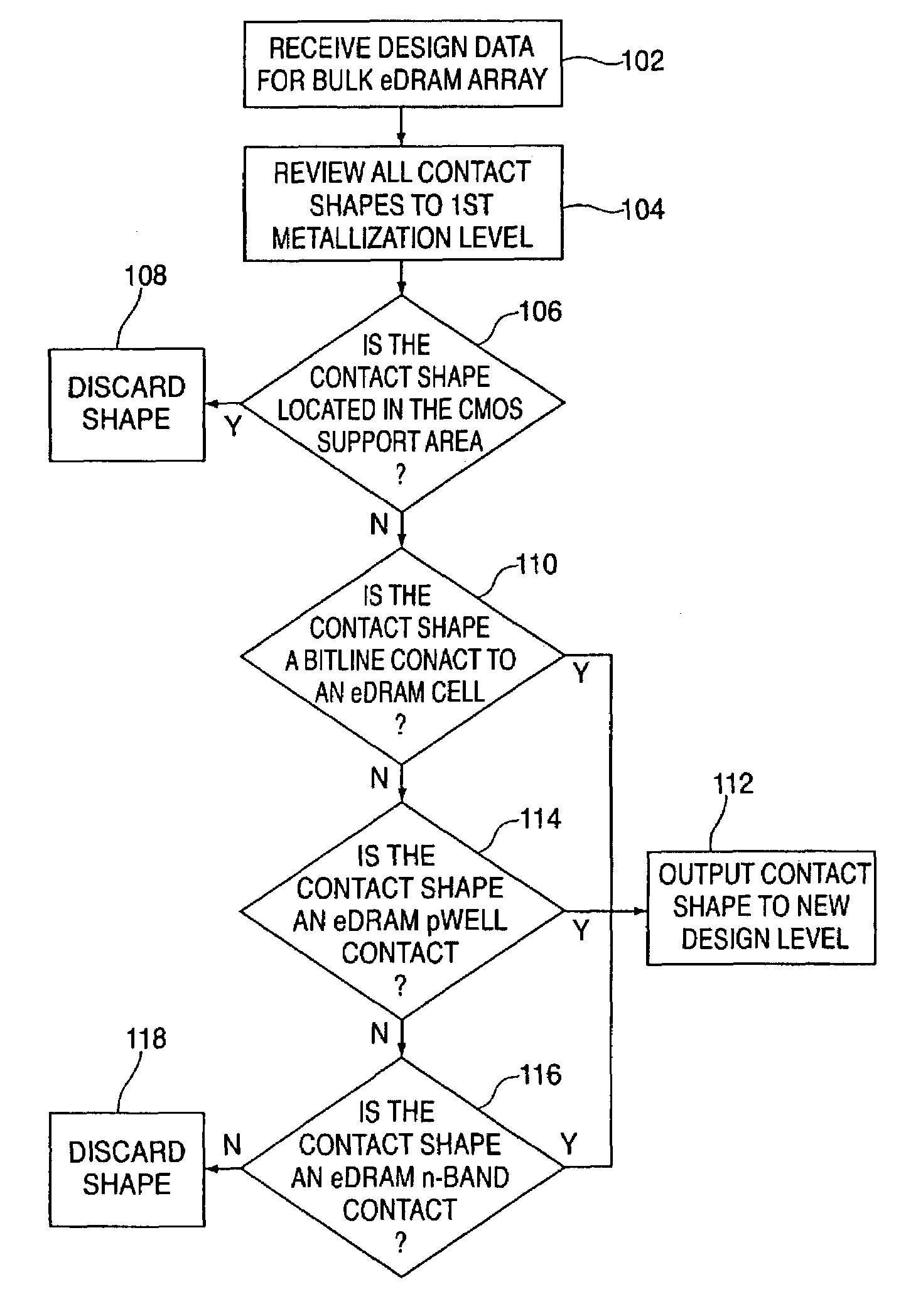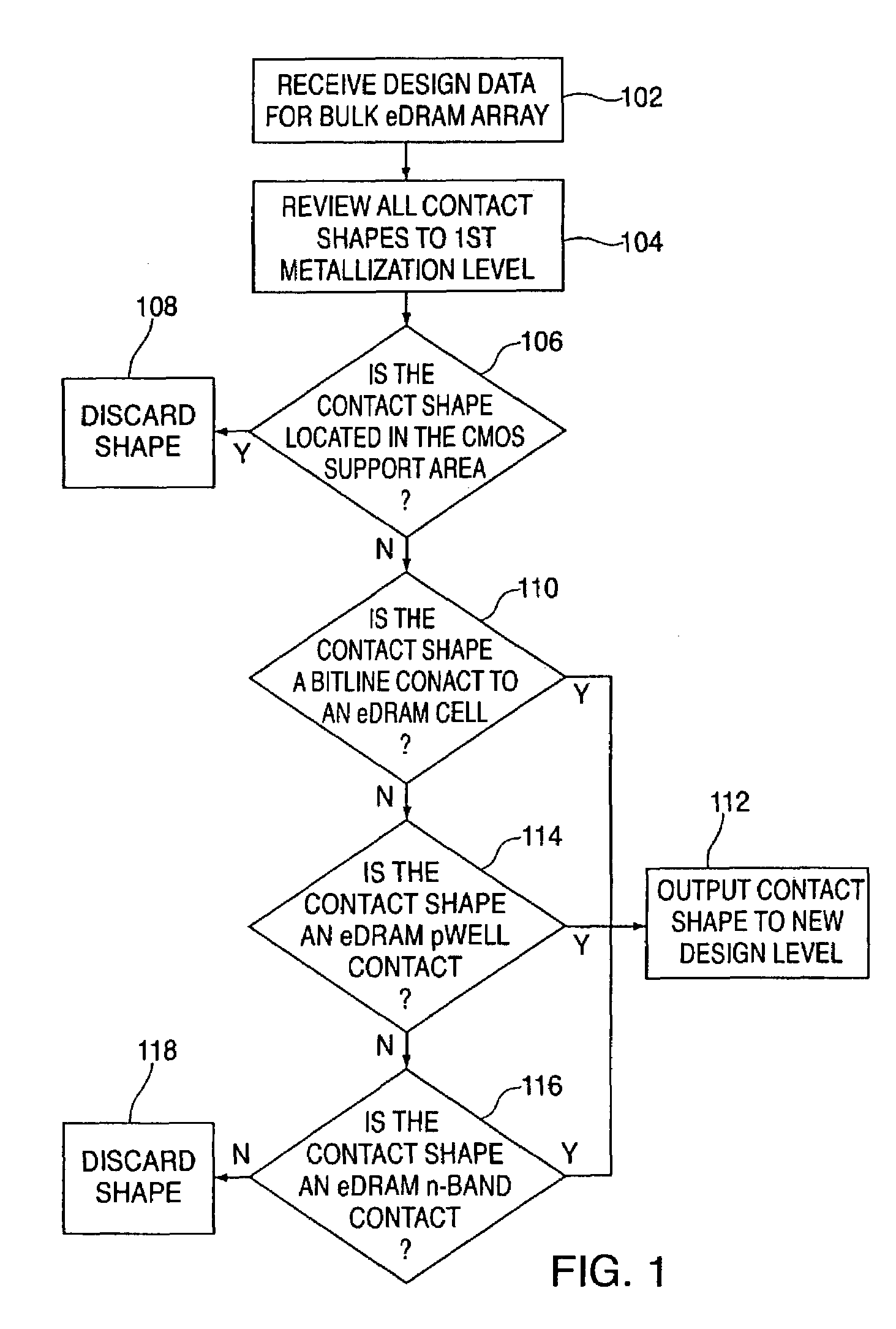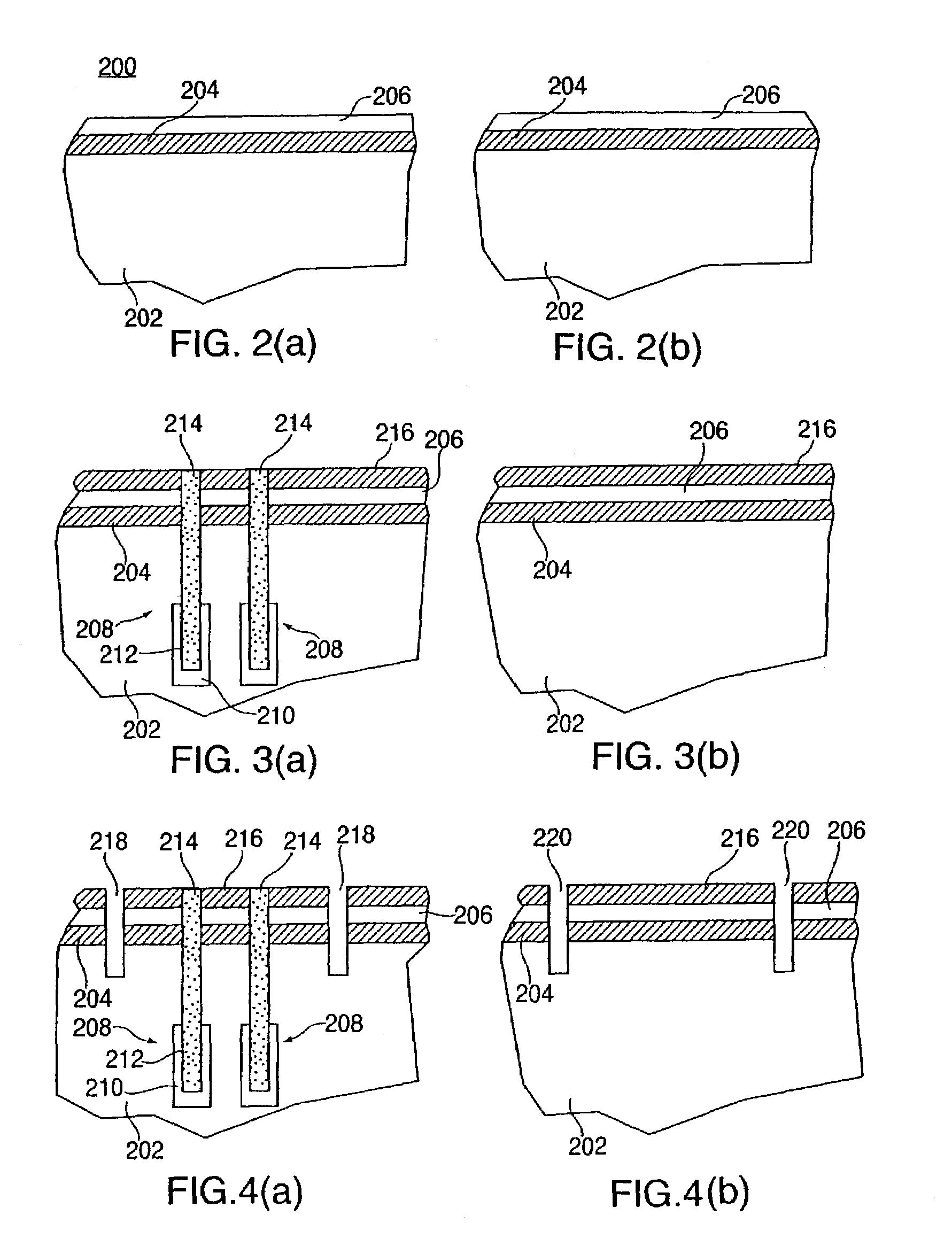Method for determining cell body and biasing plate contact locations for embedded dram in SOI
a technology of biasing plate and soi, which is applied in the field of determining the contact location of the cell body and the biasing plate of the embedded dynamic random access memory (edram), can solve the problems of parasitic paths and junction capacitance problems, memory cell information can lose information, and the amount of surface area is needed
- Summary
- Abstract
- Description
- Claims
- Application Information
AI Technical Summary
Benefits of technology
Problems solved by technology
Method used
Image
Examples
Embodiment Construction
[0013]Disclosed herein is a method for determining cell body and biasing plate contact location for embedded dynamic random access memory (eDRAM) in silicon-on-insulator (SOI) substrates. Briefly stated, the method utilizes an algorithm developed to allow body contacts to be designed and incorporated into the cells (as well as the periphery) of an eDRAM array using existing eDRAM bulk design data and real estate. In particular, the algorithm analyzes the shape and location of each contact in the bulk eDRAM design data from the first level of metallization to silicon or polysilicon. Within the vast number of total contacts at this level, those existing contacts that do not define suitable locations for SOI body contacts (e.g., contacts in the support areas of the device) are automatically filtered out. Moreover, those existing contacts that do define suitable locations for SOI body contacts (e.g., bitline to eDRAM cell contacts, periphery p-well contacts or n-band contacts) are affir...
PUM
 Login to View More
Login to View More Abstract
Description
Claims
Application Information
 Login to View More
Login to View More - R&D
- Intellectual Property
- Life Sciences
- Materials
- Tech Scout
- Unparalleled Data Quality
- Higher Quality Content
- 60% Fewer Hallucinations
Browse by: Latest US Patents, China's latest patents, Technical Efficacy Thesaurus, Application Domain, Technology Topic, Popular Technical Reports.
© 2025 PatSnap. All rights reserved.Legal|Privacy policy|Modern Slavery Act Transparency Statement|Sitemap|About US| Contact US: help@patsnap.com



